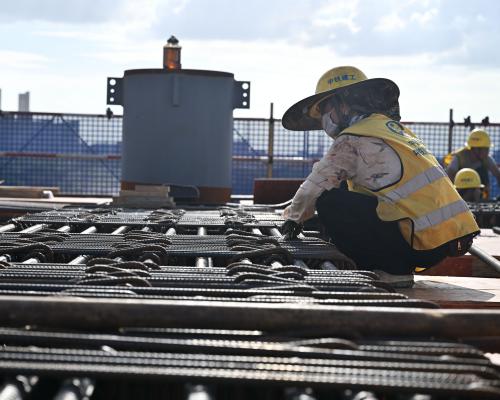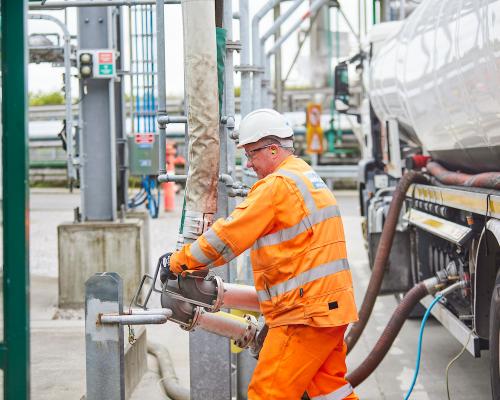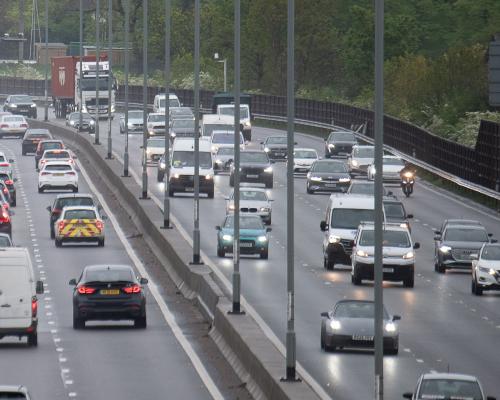
China’s astounding technological success in mass-producing quality electric vehicles (EVs) sits alongside a serious flaw in its industrial model: overcapacity.
It has the capacity to produce about three times as many units as it can sell at home. The consequences so far have included widespread price cutting, large losses, misallocation of capital, and surging low-cost EV exports leading to trade conflict.
The bigger problem, though, is that EVs are just a part of a broader overcapacity problem involving a myriad of sectors and products.
At home, Chinese overcapacity lies at the heart of the destruction of profits, debt management problems, and persistent deflation. The broadest measure of inflation, the GDP deflator, has been falling for nine quarters as of June 2025, and the fall in factory gate prices for consumer durables is the biggest since the 2008-09 financial crisis.
Abroad, the surge in exports, the other side of the coin of excess domestic capacity, colloquially now referred as the “second China shock”, is being met by trade defence measures including tariffs by both developed economies and an array of middle-income and emerging nations, such as Brazil and India.
The threat posed by low-price Chinese products to local jobs and communities, deskilling, and premature deindustrialisation is ubiquitous.
Overcapacity is not a uniquely Chinese problem, but China is nevertheless in a league of its own. It is generic, rather than specific to one or two industries. Most firms operate under a system of soft budget constraints, where weak and loss-making firms can survive, losses do not have to be distributed and bankruptcy laws are weak or barely followed.
These conditions derive from the party’s strong emphasis on industrial policy and self-reliance that dates back to the 2000s and which is nowadays being prosecuted vigorously in an adversarial geopolitical struggle for technological and manufacturing dominance.
Beyond EVs, consider high-speed rail (HSR). Investment in the sector began in earnest a bit more than a decade ago, with more than 11,000 miles in track in 2012 growing to nearly 29,000 miles this year. High-speed rail links between megacities, such as Beijing and Shanghai, and within the Pearl and Yangtze River deltas are very popular, and make money. Yet, as Dr Lu Dadao of the Chinese Academy of Sciences pointed out recently, China is overbuilding high-speed rail, along with roads and airports.
With relentless high-speed rail expansion, China is getting less, even zero, new GDP growth. Roughly 80-85% of high-speed rail lines operate at a loss, and China Railway, the state operator, is getting ever deeper into debt, with liabilities of more than 6tn yuan (£640bn) in 2024. Dr Lu has identified irrational and even illegal ventures, bribery and graft, inadequate passenger demand, stations constructed far away from cities they are intended to serve in areas of low population density, and extravagance for no purpose.
Overcapacity has also dogged housing and infrastructure after almost two decades of nurtured boom, expansion and rising indebtedness. The housing sector faces years of shrinkage because of chronic oversupply – estimates vary between four and six years of sales of unsold housing inventory at a minimum – and much lower household formation.
It is estimated that demand for housing in the coming decade will be about a half of what it was between 2012 and 2021. The overbuild of infrastructure – considering, for example, sewage pipe length, road construction, airports and commercial skyscrapers, especially in several hundred smaller and low-population cities away from the “wow” cities visited by tourists – is acute.
In the markets for goods, especially those traded internationally, there is a long history of overcapacity in steel, aluminium, plastics and non-metal minerals, all of which have links to real estate and infrastructure. It is also evident in more modern sectors like clean technology, such as wind turbines and solar cell manufacturing – where capacity utilisation rates may be 50% or lower – lithium-ion batteries, machinery, textiles, chemicals, pharmaceuticals and microcomputers.
Last month, Xi Jinping told the Central Urban Work Conference that local governments should not indulge overinvestment in AI and EVs. While recognising a serious structural flaw is at least a start, overcapacity is a systemic problem, not a random occurrence.
China’s strong commitment to a weighty arsenal of industrial policy tools in the pursuit of geopolitical goals has significant drawbacks. To improve economic performance and flexibility at home, and defuse tensions in the world economy, China needs to cross a political Rubicon and switch to a more consumer- and services-based model, import more, and give markets more leeway, but this is the antithesis of the preferred Leninist industrial policy model that favours production and supply. Xi’s government seems set in its mercantilist ways, but at the cost of rising instability at home and abroad.
George Magnus is a research associate at Oxford University’s China Centre and at Soas University of London. He is the author of Red Flags: Why Xi’s China is in Jeopardy







